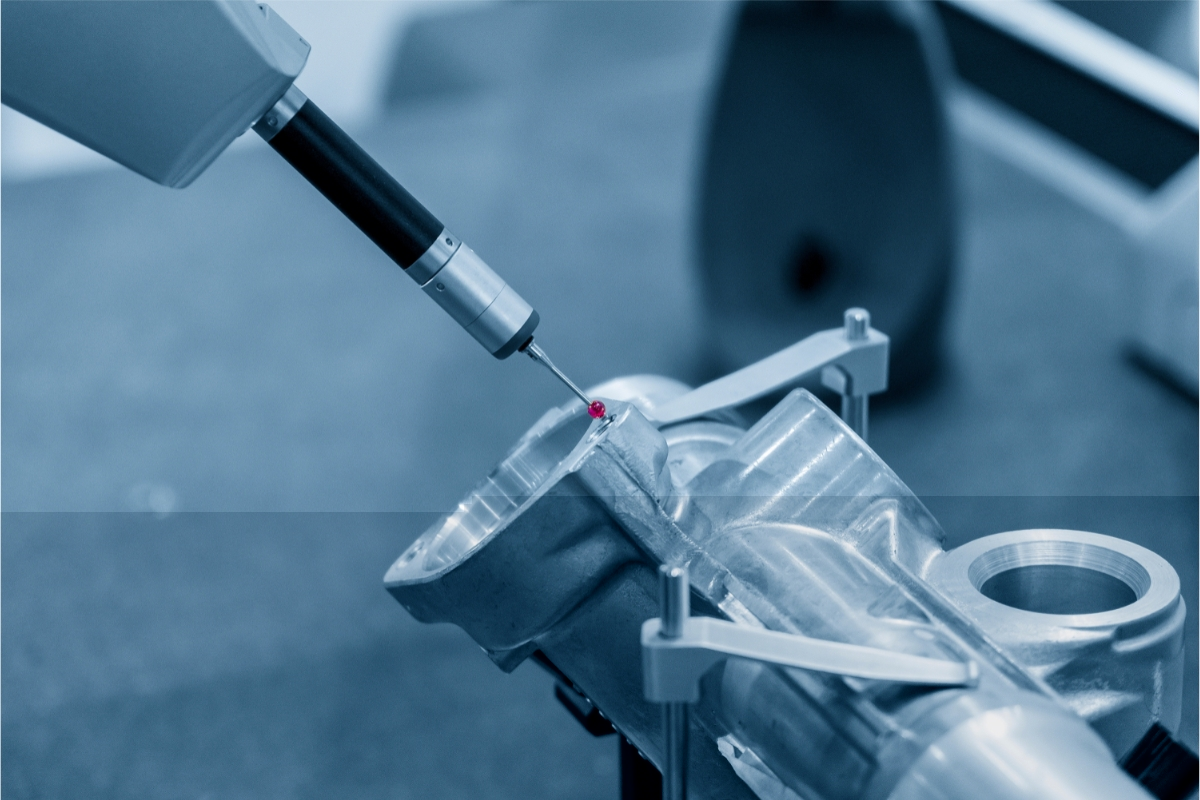Measurement has been critical to the development and progression of life since very early times. Under the guise of Metrology, measurement has provided safer structures, higher quality, faster production capabilities and increased safety and prosperity.
The invention of the Coordinate Measurement Machine (CMM) by Ferranti in the 1950s marked a significant milestone in the field of industrial metrology. This article delves into the historical significance of this machine, tracing its evolution and its impact on modern manufacturing.
Significance of the CMM
In the global industrial landscape, where international competition reigns, consumers are empowered to make choices based on price and reliability. From the era of simple measuring tools to the present, we have witnessed remarkable advancements in production capabilities, all thanks to the world of measurement.
In the modern manufacturing landscape, where speed, quality, and cost-effectiveness are paramount, the CMM plays a crucial role. With its ability to measure complex geometries on three axes and compare them against a reference, this tool offers unparalleled accuracy and precision. It is integral to quality control, prototyping, and assembly, enabling manufacturers to stay competitive.
Before the CMM
Looking back, we see that measurement has been crucial to progress. For instance, explorers relied upon measurement devices for navigation, as did the Egyptians, who built the pyramids over 4000 years ago.
A device called the Micrometer came before the CMM, but not as we know it today. William Gascoigne invented the first micrometric screw as an enhancement of the vernier to measure angular distances between stars accurately.
However, it was Jean Laurent Palmer who documented the first handheld micrometer-screw calipers in 1848, primarily based on the earlier work of Gascoigne. From there, various developments took the micrometer to its use in industrial metalworking in the 1860s.
Gauge blocks were invented by Carl Edvard Johansson in 1896 as a means to standardise measurements. The blocks are precisely created to a length or height and can be combined to create a desired dimension within a tight tolerance because of their flat surface. They are still used today to produce standard lengths and calibrating equipment.
Gauges also became crucial to the advancement of measurement. The dial indicator is one such example. According to a patent registered in the US in 1883, John Logan invented it.
Industry evolution has been responsible for significant advancements in measurement. Greater precision, more standardisation and faster measuring were required. Eventually, this led to the CMM.
The Invention
A coordinate measurement machine uses a probe to measure the geometry of objects at discrete points. Ferranti invented it in Scotland during the 1950s. This was in response to the need for faster and more flexible measuring as machining became more automated.
Initially, the machines had only two axes. However, it was an advancement relative to other measuring capabilities, and it wasn’t long before the 3-axis models arrived in the 1960s. The CMM quickly evolved, with many CMM manufacturers from Europe, the USA and Japan entering the market. New machines improved upon the size and accuracy of machines before them.
The development of probes has taken place alongside the development of the CMM. One notable probe is the touch trigger probe, invented by Sir David McMurtry. Although still a contact probe, it had less operator error because the measurement was triggered upon contact with an object. It significantly improved the precision of CMMs.
Other advancements included motor drivers for each axis, again reducing operator error.
Computers led to further improvements in the late 1970s, offering features such as geometric and temperature compensation for error handling, control, automation, data collection, analysis, and systems integration.
It’s Evolution
The CMM has incrementally improved since the 1980s, mainly due to the advancement of computer systems, probes and sensors. One improvement is portability. While traditional CMMs remain in situ, some modern machines are more portable because of lighter and stronger materials and improved sensors.
Technology and wireless communications have facilitated the real-time processing of measurement data, allowing inline measurement to occur during production. This enables early warning systems and the later analysis and correlation of data with output quality and other external systems, such as ordering.
Laser scanning and optical imaging have provided faster and more comprehensive data collection, enabling measurements that were once challenging or impossible for contact probes. CMMs offer high accuracy and precision, demonstrated by their use in safety-critical environments such as aerospace and medicine.
As the CMM continues to improve, so will the accuracy and repeatability of measuring complex geometric objects. This will give manufacturers and their customers more capabilities, resulting in more cost-effective and safer products.

Jeff Eley is the founder and managing director of Eley Metrology, a leading company in the precision measurement industry. With decades of experience in metrology, Jeff has established himself as a respected figure in the field. Under his leadership, Eley Metrology has become renowned for its expertise in coordinate measuring machines (CMMs), digital height gauges, and granite metrology products. Jeff’s vision has driven the company to develop innovative solutions, including custom-designed CMMs and the flagship long-bore measurement machine (LBM). His commitment to excellence and customer-centric approach has positioned Eley Metrology as a trusted provider of high-precision measurement tools and services for industries such as aerospace, automotive, and manufacturing.


